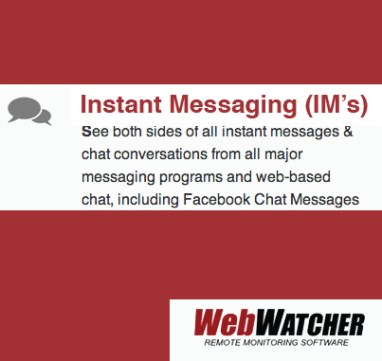Overview: Most push notifications are designed to compete for your attention, not to provide useful information. Parents can help teens learn how to sort out notifications they want or need and those they don’t, how to manage alerts, and what to do when an app’s notifications have crossed the line from useful to annoying.
Why So Many Notifications?
The most valuable commodity we all have is time. There’s only so much of it in the day, and we only have so much to spend on any one area. Increasingly, our economy revolves around this finite — and increasingly valuable — resource.
The internet has helped to create an “attention economy,” where the most valuable metric is the time spent looking at or interacting with something online. In many ways, this is an economics issue; for example, digital advertisers charge their customers more for ads that either hold the viewer’s attention or force the viewer to watch them. Others will let you remove all (or almost all) ads — for a fee.
Most social media websites, such as Instagram and Facebook, market their advertising by showing that people spend a certain amount of time, on average, viewing their feeds. Others get paid by volume, or how many times an ad is seen.
The bottom line? Sites that rely on advertising need your attention, and they will use any available method to grab it — hence the endless flood of notifications.
The Psychological Side of Notifications

There’s a psychological dimension to this phenomenon as well, especially on social media and chat apps. While we should be careful when comparing social media use to complex topics like addiction, the fact remains that getting likes on a post or a comment on a video gives us pleasure. Over time, that can become distracting; who doesn’t like to have fun?
The situation is made particularly complicated because some notifications really are useful. Teens want to know when a teacher has emailed them, when a friend has paid them back over a finance app, or when they miss a phone call. This may even extend to social media, where notifications are used to disseminate useful information like school closings, information about their jobs, or somebody getting in touch about a social event they want to attend.
The trick is to build an effective strategy to limit notifications to only what’s useful. Fortunately, there are tools in place you can use and build strategies upon.
Set a Good Example

Adults are not immune to the effects of the attention economy, and what’s good for your teen is also good for you. Take a moment before you work with them on notifications to assess your own behaviors. You might even want to demonstrate ways to manage notifications on your own phone, discussing with your teen why you accept notifications from one app but not another.
Turning Off Push Notifications on Android or iPhone
Although the two major operating systems do things slightly differently, the following tips apply to all phones.
Deny Permissions
Teach your kids how to deny apps and websites permission to notify them. Some notification settings can be changed in your phone settings; for others, you’ll need to check out the specific app’s settings.
- Sit down with your teen and go through these permissions, keeping only the ones they need and one or two they really want. Deny the rest.
- When they download new apps, they should remember to go into the settings and deny the app’s permissions.
- Some apps have settings that allow you to accept some notifications and deny others. Go through these apps with your teen to allow those they’re OK with and deny those that will be unnecessary distractions.
- If an app sneaks through, or starts abusing the privilege, you can generally block notifications directly by swiping left, right, or down on the notification. You also might want to consider outright deleting apps that don’t let you block notifications, if those apps — usually social media sites — are nonessential. They can generally be replaced by using the browser version.
Put Notifications to Sleep
The next step is to limit how notifications draw our attention. Here are some suggestions:
- Develop a schedule, if you don’t already have one, of the commitments your kids have throughout the day. This will help them consider when and where to allow notifications as well as which ones are useful and when.
- Phone operating systems generally have “do not disturb” or “notification mute” settings that will let notifications go through, but will prevent pings, buzzes, or other annoyances. Configure this mode to your liking so your teen can focus on other things.
- Consider making school, homework, family time, and bedtime notification-free zones. If your teen has trouble disengaging, parental monitoring software like WebWatcher can help by allowing you to schedule screen time limits, such as not allowing internet access after bedtime.
Delete Annoying Apps
If an app doesn’t have any real value and it’s getting annoying, your teen should just delete it. If they’re hesitant, ask them why they feel that way and to think critically about the app and how it may be affecting their life.
Similarly, every few months, they should “clean” their phone, tracking what apps are still on there and whether they’re still using them. Set standards that point apps toward the trash if they’re no longer useful, such as not opening it in a month.
Checking Yourself
Show teens how to engage consciously with devices. We’ve all unthinkingly pulled out our phones to look at them. This isn’t necessarily a bad thing. Our devices have allowed us to, for example, skip a trip to the bank or get a grocery-store pickup arranged while we wait at the dentist or are stuck in a line on an errand.
Yet we need to be alert to when we consciously pick up a device and when we do so without thinking. The question we all should ask is: Why? Boredom? Difficulty focusing? The need for a distraction? If we can better understand the reasons, we can make healthier digital decisions.
Pushing Back
Finally, whenever your teen gets a notification, they should get in the habit of thinking critically about it. They should ask themselves: Is this something I need to know right now? Why am I getting this alert? Is it intended to get me to buy something? Can it wait until later?
From there, teens will need to build their own strategies, but a more critical mindset will give them a positive starting point. They may even be pleasantly surprised to find that turning off push notifications on their Android or iPhone gives them more free time in their days.
How WebWatcher Can Help
Push notifications aren’t the only distraction complicating your teen’s life. Parental monitoring software like WebWatcher can help you and your kids understand where and how they’re interacting online and how much time they spend doing it.
Seeing the data can be enough to motivate teens to pay more attention to their internet habits. Parents can help by setting screen time limits to help their kids find the digital sweet spot — a healthy balance of time spent online and time spent doing other things.
To learn more about what WebWatcher can do for your family follow our blog.





